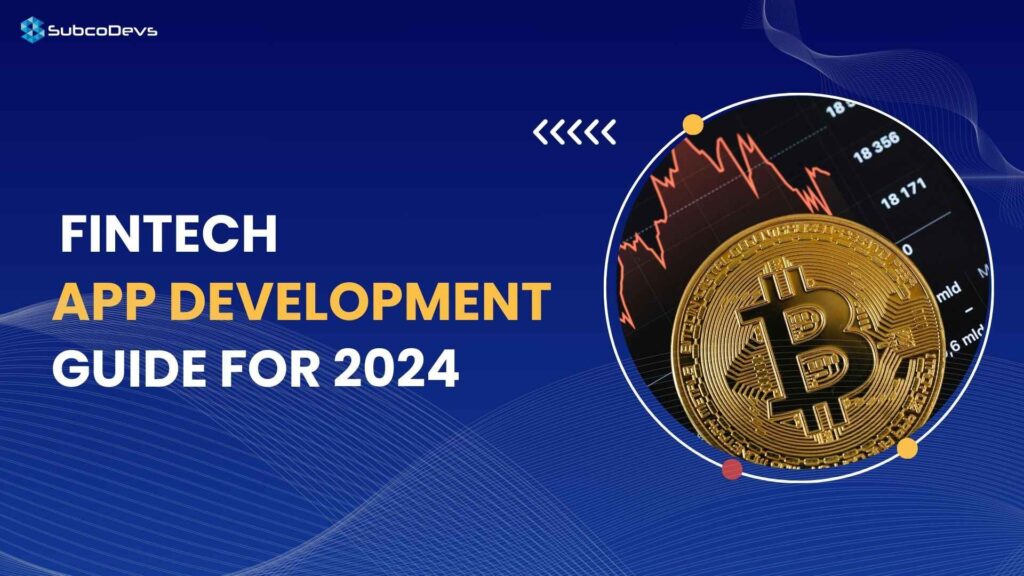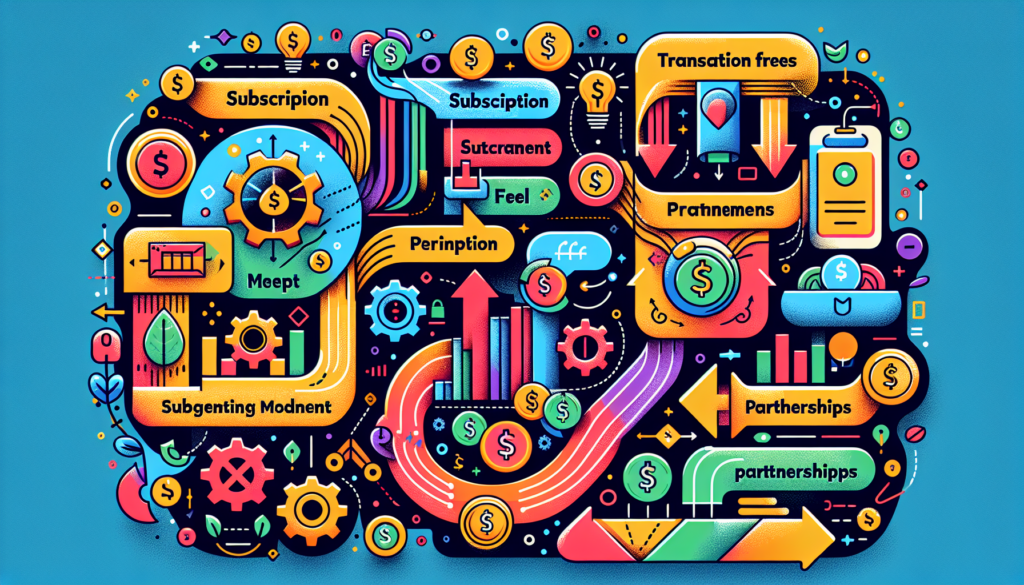Building a fintech app in 2024 involves crucial steps like market research, security measures, and selecting appropriate technologies. This guide covers all the essentials of fintech app development to help you create a successful application.
Key Takeaways
- Fintech app development is rapidly growing, expected to surpass $917 billion by 2032, driven by consumer demand for digital solutions and innovative features.
- Key features of successful fintech apps include robust security measures, user-friendly interfaces, and real-time notifications to enhance user trust and engagement.
- Thorough market research, compliance with regulatory standards, and integration of advanced technologies like AI, blockchain, and APIs are crucial steps in the effective development of fintech applications.
Understanding Fintech App Development
Fintech app development refers to creating innovative, technology-driven solutions that streamline financial services. The fintech market is thriving, with expectations to exceed $917 billion by 2032, reflecting an annual growth rate of 16.8%. This rapid growth underscores the importance of understanding the app development process and the various types of fintech applications available.
Fintech apps improve user experience by offering streamlined access to financial services, making them more digital and accessible. These applications include digital neobanks, budgeting tools, electronic wallets, and online trading platforms. Understanding the factors driving the fintech industry’s growth and the specific needs of the target audience is essential as the industry continues to expand.
Grasping the nuances of fintech app development helps avoid common pitfalls and minimize costs. This knowledge equips you with the tools to build a standout fintech app in a competitive market.
What is a Fintech App?
Fintech apps, short for financial technology applications, are designed to streamline financial services through innovative digital solutions. These apps encompass a wide range of services, including mobile apps, investment management apps, budgeting apps, and insurance apps. Each type of fintech app serves a unique purpose, catering to different aspects of financial management.
Key features of fintech apps include user-friendly interfaces, robust security measures, and innovative functionalities for convenient and efficient financial management. Leveraging advanced technologies, these apps provide enhanced user experiences, making financial transactions more accessible and secure.
Importance of Fintech Apps
The demand for fintech apps is at an all-time high, driven by consumers’ preference for digital solutions over traditional banking. These apps offer unparalleled convenience, allowing users to manage their finances anytime, anywhere. The rise in mobile banking app and digital payment usage during 2020 further highlights this trend.
For financial institutions, fintech app development improves cash flow and enhances customer care through smooth transaction experiences. Small businesses also benefit from fintech solutions by lowering their financial operational costs, ensuring their survival in a competitive market.
As banks develop fintech apps to attract customers with innovative features, the necessity for adapting to fintech development becomes increasingly evident.
Key Features of Successful Fintech Apps
Successful fintech apps are characterized by several key features that enhance user trust and engagement. These features include robust security measures, a user-friendly interface, and real-time notifications. As the fintech industry continues to grow, the competition among fintech apps fosters innovation, leading to improved customer experiences.
Security is paramount in fintech apps, ensuring that users’ financial data is protected from breaches and unauthorized access. Simultaneously, a well-designed user interface makes it easy for users to navigate and utilize app features effectively, boosting retention rates.
Real-time notifications keep users informed about account activities, enhancing transparency and trust.
Security Measures
Security is a top priority in fintech apps. Best-in-class measures include multi-tier authentication, data encryption, and DDoS protection. These measures create a secure environment for users to manage their finances confidently.
Biometric verification techniques, such as facial recognition, voice recognition, and retinal scanning, further enhance security in fintech apps. By incorporating these advanced security measures, fintech apps can build user trust and ensure the safety of financial transactions.
User-Friendly Interface
A user-friendly interface is essential for fintech app success, effectively guiding users through financial activities. Customizable interfaces let users tailor their experience based on individual preferences, addressing diverse financial literacy levels and ensuring engagement.
AI-driven personalization allows fintech apps to deliver tailored experiences, enhancing user engagement and satisfaction. By integrating social features and leveraging B2C data, apps like Venmo foster engagement and create a seamless user experience.
Real-time Notifications
Real-time notifications keep users informed about account activities and potential security threats in fintech apps. These alerts significantly enhance user experience and trust, ensuring users are always aware of critical changes.
Steps to Develop a Fintech App
Developing a fintech app involves a series of crucial steps, starting from market research and idea validation to defining the minimum viable product (MVP), selecting the right technology stack, designing UI/UX, development, testing, and finally, to build a fintech app.
Understanding each step in the app development process is essential to build a successful fintech app.
Market Research and Idea Validation
Conducting thorough market research to identify your target audience, competitors, and market gaps is the first step in developing a fintech app. This research helps understand the specific needs and preferences of potential users, enabling you to offer a better alternative to existing products.
Compliance research is crucial during this phase to identify legal hurdles and restrictions that may impact development. Validating your app idea through market research ensures your product meets market demands and adheres to regulatory requirements.
Defining MVP (Minimum Viable Product)
Defining the MVP scope is vital in fintech app development, as it clarifies the features and checks the validity of the basic idea. MVP features include key values and user stories that define the basic functional scope, allowing you to test the idea promptly.
Selecting the Right Technology Stack
Selecting the right technology stack is crucial for your fintech app’s success. The stack includes frameworks, databases, and APIs used in development. For web fintech apps, recommended technologies include React for the frontend and Node.js for the backend.
For mobile app development, Kotlin and Swift are popular frameworks for native Android and iOS apps, respectively. Cross-platform options like React Native and Xamarin can reduce development costs by allowing a single codebase for multiple platforms.
Additionally, ideal database options for fintech apps include PostgreSQL, MySQL, MongoDB, and Redis for effective data management.
Designing UI/UX
A user-friendly interface is vital in the fintech app development journey. An intuitive and seamless user experience leads to higher engagement and satisfaction, essential for retaining clients. A well-designed UI/UX ensures users can easily access and utilize app features, fostering loyalty and encouraging repeated use.
In a competitive fintech market, a good UI/UX can significantly improve customer retention by making the app more appealing and functional. By prioritizing user-friendly design, you can create a fintech app that stands out and meets the diverse needs of your users.
Development and Testing
The development and testing phase involves coding the app and completing the software development process. Building a fintech app from scratch can result in easier and cheaper maintenance over time. Ensuring the app is bug-free is crucial for effective scaling and prompt addressing of customer concerns. An agile development methodology allows for repeated feedback without disrupting workflows, ensuring continuous improvement.
Post-launch services include comprehensive maintenance and support for the fintech application. Companies with dedicated teams of developers and designers can significantly elevate the final product’s quality, ensuring a robust and reliable app. Users typically appreciate a trial phase before committing to a subscription, allowing them to evaluate the app’s value.
Launch and Iterate
Launching your fintech app is just the beginning. Gathering user feedback is crucial for continuous app improvement. Conducting A/B testing during the launch phase helps refine the product. The Beta testing phase allows developers to discover irregularities and gather actionable feedback from local customers or colleagues.
After launching, integrating the best features based on user feedback enhances the app. Developers should adjust features that aren’t working according to feedback and provide regular updates to keep the app relevant amidst technological innovations.
Using an MVP allows developers to quickly present the app to the audience and collect critical feedback, as demonstrated by the success of the EdFundo app.
Advanced Technologies in Fintech App Development
Advanced technologies play a pivotal role in the evolution of fintech apps. Technologies like AR, VR, and the Metaverse are being utilized to enhance user experience and offer innovative solutions.
Strong encryption and robust security measures are essential for fintech apps to protect sensitive user data and combat cybersecurity threats.
Artificial Intelligence and Machine Learning
Artificial Intelligence (AI) and Machine Learning (ML) are transforming fintech solutions. AI services for intelligent workflows can boost productivity and reduce costs. Automation in fintech apps offers payment scheduling and streamlines invoicing processes. Machine learning assesses risk, makes forecasts, and improves services, enhancing overall functionality.
Next-gen insurance companies use big data to create personalized insurance policies, showcasing AI/ML’s power in service enhancement. Automation and advanced AI/ML algorithms also enhance functions in stock trading applications.
Blockchain Integration
Blockchain integration ensures secure and transparent transactions, vital for maintaining trust in financial services. The technology behind blockchain improves transaction security, making it essential for complex fintech solutions.
APIs and Third-Party Integrations
APIs and third-party integrations are vital for extending fintech app functionalities. Open banking APIs allow third-party providers to access customer transaction data, promoting financial transparency.
Integrating third-party services and APIs enhances user experience by providing seamless and comprehensive fintech solutions.
Compliance and Security in Fintech Apps
Compliance and security are paramount in fintech app development. Adhering to regulatory standards ensures fintech apps operate within legal frameworks and protect users’ financial information.
Effective security and compliance measures protect user data while improving the overall integrity and reliability of fintech apps.
Regulatory Compliance
Fintech apps must adhere to key regulations such as AML (Anti-Money Laundering), GDPR (General Data Protection Regulation), and CCPA (California Consumer Privacy Act) to ensure legal operations. GDPR emphasizes user privacy and data protection, crucial for fintech services. Regular audits help identify areas of non-compliance and highlight opportunities for improvement.
Fintech apps must comply with standards like PA-DSS (Payment Application Data Security Standard) and PSD2 (Revised Payment Service Directive) to ensure secure payment services. Robust compliance measures include strong security protocols and adherence to regulatory standards to prevent money laundering.
APIs help maintain meticulous AML/KYC processes, enhancing overall compliance capabilities.
Data Protection Strategies
Protecting sensitive data is a primary responsibility of fintech apps. Developers must exercise heightened caution when handling financial data, which is especially vulnerable to theft and cybersecurity risks. Techniques like mock data masking can be used when testing features that do not require real data, ensuring the security of sensitive information.
Monetizing Your Fintech App
A well-defined monetization strategy is crucial for sustained revenue generation of fintech apps. Choosing the right primary monetization model is the first step. Common models include subscription plans, transaction fees, and advertisements. Each has its advantages and can be tailored to the app’s specific features and target audience.
Subscription Models
Subscription-based revenue models allow fintech apps to generate consistent income through regular user payments. Users are typically charged weekly, monthly, or yearly, making it essential to choose the right frequency for your target audience.
Tiered subscription plans can cater to different user segments, enhancing satisfaction and retention.
Transaction Fees
Transaction fees can be a significant revenue source for apps facilitating payment processing, charging a percentage or flat fee per transaction. This model provides a steady income stream, especially in payment processing and money transfer apps.
Advertisements and Partnerships
Targeted ads and referrals can become a core revenue source with a large customer base, offering personalized deals. Strategic partnerships can further enhance the monetization potential of fintech apps.
Combining advertisements with partnerships is crucial for the profitability of fintech apps.
Choosing the Right Fintech App Development Company
Selecting the right fintech app development company is crucial for the success of your project. Key considerations include evaluating expertise and experience, reviewing portfolios and testimonials, and understanding cost and timeline considerations.
A reliable fintech app development company can provide the necessary technical expertise to streamline the fintech mobile app development process and deliver a high-quality product through fintech software development services.
Evaluating Expertise and Experience
The experience of a fintech app development company in the industry can indicate its understanding of market challenges and requirements. Companies with a strong portfolio of fintech projects are often more reliable, showcasing their capability in handling complex regulatory and technological needs. Engaging certified professionals and technical experts within the company can significantly enhance the development process and outcomes.
Reviewing case studies or past successful projects can provide insights into a company’s problem-solving abilities and innovation. Overall, assessing both industry experience and technical expertise helps in identifying a trustworthy fintech app development partner.
Reviewing Portfolios and Testimonials
Evaluating a company’s past work and client feedback is essential to determine their suitability for your project. The client’s impression of Appinventiv’s service reflected professionalism, expertise, and commitment to delivering top-notch results.
Ensuring both quality and reliability through careful evaluation of portfolios and testimonials significantly enhances project success.
Cost and Timeline Considerations
While cost is a significant factor, the overall value and quality of service should also heavily influence your choice. Understanding the pricing models and ongoing support fees is crucial when evaluating fintech app development costs.
Consideration of a clear cost structure helps in avoiding hidden charges throughout the app development process. Development timelines can vary significantly based on the complexity of the fintech application being built.
Future Trends in Fintech App Development
The fintech landscape is continuously evolving with emerging trends that prioritize consumer needs and financial stability in the financial industry. Key trends include the rise of decentralized finance (DeFi), enhanced personalization with AI, and increased adoption of cryptocurrencies.
Understanding these trends can help you stay ahead in the competitive fintech market.
Rise of Decentralized Finance (DeFi)
Decentralized Finance (DeFi) is an emerging financial technology that removes intermediaries from financial transactions, utilizing blockchain technology to provide open-source financial services without traditional financial institutions. Core principles of DeFi include transparency, immutability, and accessibility, which contribute to democratizing financial services.
The growing adoption of DeFi poses significant challenges to traditional financial systems, including regulation, risk management, and competition for user engagement. However, it also presents opportunities for more equitable access and innovative financial products, potentially reshaping the future of finance.
Enhanced Personalization with AI
AI technologies enhance user experiences in fintech apps by analyzing user behavior and preferences, allowing for adaptive learning. AI-driven chatbots provide personalized customer support and financial advice, improving overall user satisfaction.
Data collected from user interactions enables fintech apps to tailor their features and offerings, leading to targeted marketing and services. Customized financial solutions powered by AI help users meet specific financial goals, enhancing their investment decisions and budgeting practices.
Future engagement strategies will include more immersive interactions, utilizing augmented reality and personalized notifications.
Increased Adoption of Cryptocurrencies
Cryptocurrencies are projected to gain traction in fintech solutions, despite a general cooling of interest among average investors. The growth of cryptocurrencies continues, although skepticism remains among many consumers regarding their reliability as investments. The rise of cryptocurrencies is leading to the creation of new financial products and services, expanding choices for consumers and investors.
The increasing adoption of cryptocurrencies suggests a significant transformation in how financial solutions are approached within the fintech space. As fintech apps integrate cryptocurrency functionalities, they provide users with more diverse and innovative financial options.
Summary
In conclusion, the journey of developing a successful fintech app involves understanding the market, defining your MVP, selecting the right technology stack, and focusing on user-friendly design and robust security measures. By leveraging advanced technologies and adhering to regulatory compliance, you can create a fintech app that meets the needs of today’s digital-savvy consumers. Stay ahead of future trends like DeFi, AI personalization, and cryptocurrency adoption to ensure your app remains relevant and competitive. Embark on your fintech app development journey with confidence, knowing that you have the knowledge and tools to succeed.





